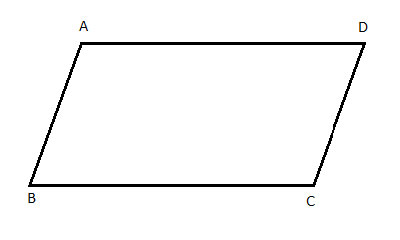One of the basic properties of parallelograms is that any pair of consecutive angles are supplementary. This property will be very useful in many problems involving parallelograms. We'll prove this property using one of the theorems about parallel lines - the Consecutive Interior Angles Theorem.
Problem
ABCD is a parallelogram. Show that the pairs of consecutive angles are supplementary.

Strategy
The definition of a parallelogram is that both pairs of opposing sides are parallel.
Therefore, it's a simple use of the properties of parallel lines to show that the consecutive angles are supplementary.
We have already proven that for the general case of parallel lines, a transversal line creates interior angles that sum up to 180°.
But, a parallelogram is simply two pairs of parallel lines. So, let's apply the above theorem to each pair of sides. In other words, the two opposing sides will be used as the parallel lines. And, we'll use one of the other sides as the transversal line. In conclusion, doing this for each one of the pairs of sides gives the required proof.
Proof
(1) AB||CD //Given, definition of a parallelogram
(2) m∠ABC + m∠DCB = 180° // consecutive interior angles between 2 parallel lines
(3) AD||BC //Given, see (1)
(4) m∠BAD + m∠CDA = 180° // consecutive interior angles between 2 parallel lines
